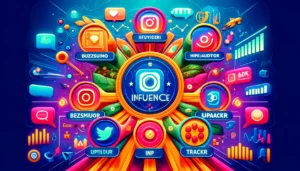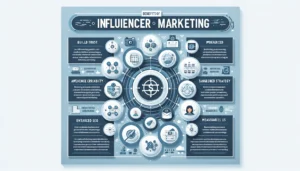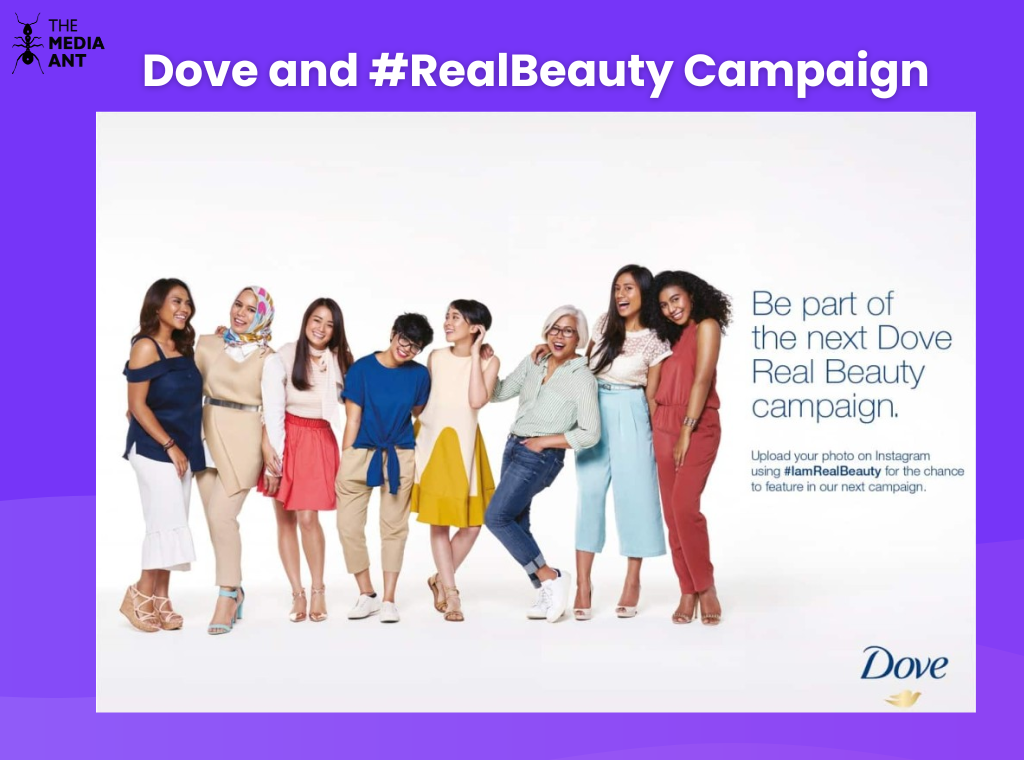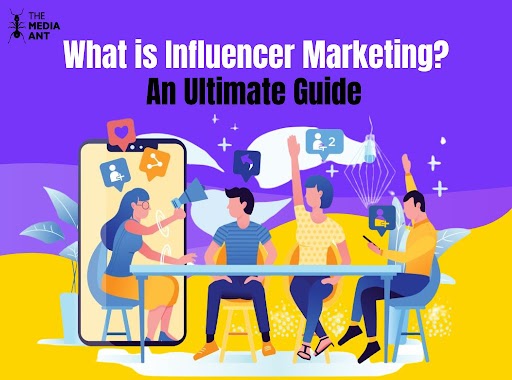Influencer marketing connects brands with social media influencers to promote products authentically. Influencers range from mega to nano, each offering different reach and engagement levels. Tools like BuzzSumo and Upfluence help manage campaigns. This strategy builds trust, expands reach, enhances engagement, and drives sales. Agencies assist with strategy, influencer selection, campaign management, and performance tracking to ensure successful campaigns and maximize ROI.
What is Influencer Marketing?
In today’s digital age, influencer marketing has revolutionized the way brands connect with consumers. An influencer, simply put, is a person who has the power to impact others’ purchasing decisions through their authority, knowledge, position, or relationship with their audience. This form of marketing involves brands partnering with individuals who have a significant following on social media or other online platforms.
Originally rooted in celebrity endorsements, influencer marketing has evolved. Now, brands often find greater value in collaborating with social content producers who have specialized, engaged audiences. These influencers, also known as “content creators” or “social media personalities,” leverage their platforms to promote products or services, aiming to reach new and engaged audiences.
The strength of influencer marketing lies in its authenticity. Influencers build trust with their followers by sharing relatable content and genuine endorsements. This connection makes their recommendations highly persuasive, especially among younger generations who are increasingly looking to influencers for purchasing advice.
For businesses, understanding and leveraging influencer marketing is crucial. By partnering with the right influencers, brands can boost their visibility, build trust with potential customers, and ultimately drive sales. As consumer behaviour continues to shift towards digital, influencer marketing remains a powerful tool for brands looking to thrive in the modern marketplace.
Types of Influencer Marketers by Size
Whoever you see on your Instagram feed or YouTube recommendation are all influencers, but as an advertiser you must know the different types of Influencer Marketing.
Here are a few ways to categorize the influencers, that is based on the number of followers, type of influence, type of content, based on the product categories etc. But one of the most common categorizations of influencers is based on the number of followers.
1. Mega-Influencers
- Typically have more than 1 million followers.
Mega-influencers are the celebrities of the social media world, boasting millions of followers. Their posts can reach a vast audience, making them ideal for large-scale brand awareness campaigns. Brands often collaborate with mega-influencers to leverage their star power and wide-reaching influence.
2. Macro-Influencers
- Generally have between 100,000 to 1 million followers.
With follower counts ranging from 100,000 to a million, macro-influencers are industry experts, bloggers, and public figures. They offer a balanced blend of reach and engagement, making them suitable for campaigns that aim to reach specific niches while maintaining significant visibility.
3. Micro-Influencers
- Usually have between 10,000 to 100,000 followers.
Micro-influencers have a more modest following, typically between 10,000 and 100,000. Despite their smaller audience, they often boast higher engagement rates and a strong connection with their followers. Brands partner with micro-influencers for authentic promotion and targeted marketing, especially within niche communities.
4. Nano-Influencers
- Typically have fewer than 10,000 followers.
Nano-influencers are everyday social media users with followers ranging from 1,000 to 10,000. Their content is highly relatable, and their recommendations are perceived as genuine by their tight-knit follower base. Collaborating with nano-influencers is perfect for local or highly specific marketing campaigns.
5. Bloggers and Content Creators
Beyond social media, bloggers and content creators wield significant influence through their websites and platforms like YouTube. Their long-form content allows for in-depth brand storytelling and comprehensive product reviews, helping to build trust and credibility with their audience.
6. Employee Influencers
Employee influencers are a brand’s own staff who share their experiences and company culture on social media. This type of influencer marketing humanizes the brand and builds authenticity. Employee advocacy programs can turn team members into powerful brand ambassadors.
7. Customer Influencers
Satisfied customers who share their positive experiences can become valuable influencers. Encouraging user-generated content and customer reviews can amplify brand credibility and influence purchasing decisions. Brands often use hashtags and social media challenges to promote customer engagement.
Influencer Marketing Tools
Navigating the world of influencer marketing can be challenging, but with the right tools, you can streamline your campaigns and maximize your reach. Here are some essential influencer marketing tools to consider:
1. BuzzSumo
Discover trending content and top influencers in your niche. BuzzSumo helps you identify the right influencers based on engagement metrics, ensuring your campaigns resonate with your target audience.
2. HypeAuditor
Evaluate influencer authenticity and audience quality. HypeAuditor provides in-depth analytics to detect fake followers and ensure you partner with genuine influencers who can deliver real results.

3. Upfluence
Manage influencer relationships and campaigns efficiently. Upfluence offers a comprehensive platform for discovering, contacting, and collaborating with influencers, simplifying the entire process.
4. Traackr
Track the performance of your influencer marketing efforts. Traackr offers robust analytics and reporting features, allowing you to measure ROI and optimize future campaigns.
5. Heepsy
Find influencers across various social media platforms. Heepsy allows you to filter influencers by location, category, and follower count, helping you connect with the most relevant influencers for your brand.
By leveraging these tools, small businesses can enhance their influencer marketing strategies, ensuring more effective and impactful campaigns. Start using these tools today to connect with the right influencers and elevate your brand’s presence.
What is the Role of Influencer Marketing?
Influencer marketing has taken center stage as a key strategy for brands looking to connect with their target audiences. But what exactly is the role of influencer marketing, and why has it become so crucial? Let’s explore the multifaceted impact of influencer marketing.
1. Building Trust and Authenticity
At the heart of influencer marketing is the ability to build trust. Influencers, with their authentic voices and genuine connections with their followers, can lend credibility to a brand. When an influencer endorses a product, their audience sees it as a personal recommendation rather than a traditional advertisement, fostering trust and authenticity.
2. Expanding Reach and Visibility
Influencers provide access to a broader audience that brands might struggle to reach through conventional marketing channels. By leveraging the established follower base of influencers, brands can significantly expand their reach and visibility, tapping into new demographics and markets.
3. Enhancing Engagement
Unlike traditional advertising, influencer marketing thrives on interaction and engagement. Influencers actively engage with their followers through comments, likes, shares, and stories, creating a dynamic conversation around the brand. This level of engagement can drive higher levels of interest and loyalty among consumers.
4. Creating Compelling Content
Influencers are skilled content creators who know how to craft compelling narratives that resonate with their audience. By partnering with influencers, brands can benefit from high-quality, creative content that showcases their products in an appealing and relatable manner. This content can be leveraged across various marketing channels to enhance brand messaging.
5. Driving Conversions and Sales
The ultimate goal of any marketing strategy is to drive conversions and sales, and influencer marketing excels in this area. Influencers can inspire their followers to take action, whether it’s making a purchase, signing up for a service, or engaging with a brand’s content. Their recommendations carry weight, often leading to higher conversion rates.
6. Gaining Insights and Feedback
Influencers provide valuable insights into consumer preferences and trends. By monitoring the responses and feedback from influencer campaigns, brands can gain a deeper understanding of their target audience’s desires and pain points. This information can inform future marketing strategies and product development.
7. Humanizing the Brand
Influencers add a personal touch to brand promotions, humanizing the brand and making it more relatable. This human connection is vital in today’s market, where consumers crave authenticity and genuine interactions. Influencer marketing helps bridge the gap between brands and their audiences, fostering a sense of community and loyalty.
How Does Influencer Marketing Work?
Influencer marketing works by setting clear goals, finding the right influencers, and developing a strategy for collaboration. Influencers create and share content that promotes your brand, which you then amplify through your channels. The campaign’s success is measured through performance tracking, and insights are used to refine future efforts while building lasting relationships with influencers for ongoing partnerships.
- Define Goals and Objectives: Establish what you want to achieve (e.g., brand awareness, sales).
- Identify Suitable Influencers: Research and select influencers aligned with your brand and audience.
- Develop Collaboration Strategy: Decide on content type and campaign guidelines.
- Execute Campaign: Influencers create and share content featuring your brand.
- Amplify Content: Share influencer content on your channels.
- Monitor Performance: Track engagement metrics and campaign impact.
- Evaluate and Iterate: Compare results against objectives.
- Build Long-term Relationships: Maintain connections with effective influencers for future collaborations.
Benefits of Influencer Marketing
Are you still unsure about integrating influencer marketing into your strategy? With the influencer market continuously evolving, making this decision can feel overwhelming. Here are some key benefits of influencer marketing to help guide your choice:
1. Building Trust and Credibility
Influencers have cultivated strong relationships and trust with their followers. Their recommendations are seen as authentic and credible, which can significantly boost your brand’s reputation. By partnering with influencers, you leverage their established credibility to build trust with a broader audience.
2. Enhanced Brand Awareness
Influencer marketing can dramatically increase your brand’s visibility. When influencers share your content, their followers learn more about your brand, its story, and the solutions you offer. This heightened awareness can lead to increased recognition and recall among potential customers.
3. Targeted Audience Reach
One of the greatest advantages of influencer marketing is its precision in reaching specific audiences. Influencers have already built a following that aligns with certain interests and demographics. By collaborating with relevant influencers, your content reaches a targeted audience that is more likely to be interested in your products or services.

4. Improved Content Strategy
Incorporating influencer content into your marketing strategy can enrich your content calendar. Influencers often produce high-quality, engaging content that can fill gaps when your own content ideas are running low. This not only keeps your social media profiles active but also provides fresh perspectives and diverse content for your audience.
5. Boosted Engagement Rates
Influencer-generated content tends to receive higher engagement rates compared to brand-generated content. Followers of influencers are more likely to like, comment, and share posts that feature authentic endorsements, leading to increased interaction and engagement with your brand.
6. Cost-Effective Marketing
Compared to traditional advertising methods, influencer marketing can be more cost-effective. Working with micro and nano-influencers, in particular, offers high engagement at a lower cost, making it a viable option for brands with varying budget sizes.
7. Enhanced SEO and Online Presence
Collaborating with influencers can improve your search engine rankings. Influencers often link back to your website or social media profiles, increasing your site’s authority and driving organic traffic. This boost in online presence can have a positive impact on your overall digital marketing efforts.
8. Measurable Results
Influencer marketing allows for detailed tracking and measurement of campaign performance. Brands can monitor key metrics such as reach, engagement, conversions, and ROI, enabling them to refine strategies and optimize future campaigns.
Cost of Influencer Marketing
The cost of influencer marketing can vary widely depending on several factors, including the influencer’s follower count, engagement rate, niche, and platform. Here’s a breakdown of the key elements that influence pricing:
1. Influencer Tier
- Nano-Influencers (1K-10K followers): Typically charge between $10 to $100 per post. They offer high engagement rates and a loyal, niche audience.
- Micro-Influencers (10K-100K followers): Fees range from $100 to $500 per post, balancing reach with engagement.
- Macro-Influencers (100K-1M followers): Expect to pay between $500 to $10,000 per post. They provide broad reach and significant influence.
- Mega-Influencers (1M+ followers): Costs start at $10,000 per post and can go up significantly. They offer massive reach and are often celebrities.
2. Platform
- Instagram: Most popular for influencer marketing, with posts ranging from $100 to $10,000+.
- YouTube: Video content commands higher prices, typically $200 to $20,000+ per video.
3. Campaign Type
- Sponsored Posts: Simple posts promoting a product or service.
- Giveaways: Higher engagement but slightly more costly.
- Takeovers: Influencers control a brand’s social media for a day, often more expensive due to the high level of involvement.
4. Duration and Usage Rights
- Longer campaigns and extended usage rights for content can increase costs. Brands might also pay extra for exclusivity or rush fees.
5. Industry and Niche
Certain niches like fashion, beauty, and tech command higher prices due to competitive demand.
Understanding these factors can help brands budget effectively and choose the right influencers to maximize their ROI. Investing in influencer marketing is about finding the right balance between cost and potential impact to drive meaningful engagement and conversions.
Influencer Marketing Strategy to Follow in 2024
The right Influencer Marketing Strategy can be a game-changer for your brand if executed correctly. Here’s a concise guide to help you harness its power:
1. Define Your Goals
Clearly outline what you want to achieve—brand awareness, engagement, or sales. Your goals will shape your strategy and choice of influencers.
2. Know Your Audience
Understand your target audience’s preferences, behaviors, and demographics. Choose influencers who resonate with this audience to ensure your message hits the mark.
3. Identify the Right Influencers
Look for influencers whose values align with your brand and who have a genuine connection with your target audience. Check their engagement rates and follower demographics.
4. Craft Authentic Partnerships
Collaborate with influencers to create authentic content that resonates with their audience. Encourage creative freedom to maintain their unique voice and authenticity.
5. Leverage Multiple Platforms
Utilize various social media platforms like Instagram, YouTube, and Facebook to reach a wider audience. Tailor your campaigns to fit the strengths of each platform.
6. Create Engaging Content
Focus on high-quality, engaging content that tells a story. Use a mix of posts, stories, videos, and live sessions to keep the audience interested.
7. Track and Measure Performance
Monitor key metrics such as engagement rates, click-through rates, and conversion rates. Use tools like Google Analytics and social media insights to assess the effectiveness of your campaigns.
8. Build Long-Term Relationships
Invest in building long-term relationships with influencers. Consistent collaboration can lead to more authentic endorsements and stronger brand loyalty.
Examples of Influencer Marketing
H&M and Chiara Ferragni
- H&M collaborated with Chiara Ferragni, a prominent fashion influencer, to promote a limited-edition collection.
- Chiara shared styled photos of herself wearing H&M pieces on Instagram, driving excitement and sales among her fashion-forward followers.
Dove and #RealBeauty Campaign

- Dove’s #RealBeauty campaign featured real women influencers sharing stories and promoting self-esteem and body positivity.
- Influencers posted empowering messages and images that resonated deeply with Dove’s target audience, fostering a meaningful connection with the brand.
What Do Influencer Marketing Agencies Do?
Influencer marketing agencies play a crucial role in connecting brands with the right influencers to create impactful campaigns. Here’s a brief overview of their key functions:
1. Strategy Development
Agencies craft tailored influencer marketing strategies based on a brand’s goals, target audience, and budget. They ensure the strategy aligns with the brand’s overall marketing objectives.
2. Influencer Identification
Using advanced tools and databases, agencies identify and vet influencers who align with the brand’s values and have the right audience demographics. They focus on influencers with genuine engagement and influence.
3. Campaign Management
Agencies handle all aspects of campaign execution, from negotiating contracts and setting timelines to coordinating content creation and ensuring timely delivery. They streamline the process to ensure seamless collaboration between brands and influencers.
4. Content Creation
Many agencies assist in developing creative briefs and guiding influencers to produce authentic, high-quality content that resonates with their audience and aligns with the brand’s messaging.
5. Compliance and Legal
Agencies ensure all content complies with legal regulations and platform guidelines, including proper disclosure of sponsored content to maintain transparency and trust.
6. Performance Tracking
Agencies monitor campaign performance using various metrics such as engagement rates, reach, impressions, and conversions. They provide detailed reports and insights to measure ROI and inform future strategies.
7. Relationship Management
Building and maintaining relationships with influencers is key. Agencies nurture these relationships to ensure ongoing collaboration and foster loyalty between influencers and brands.
How do Influencers Marketing Agencies Execute their Work?
Influencer marketing agencies streamline the process of creating successful influencer campaigns. Here’s a concise look at how they execute their work:
1. Client Briefing and Goal Setting
Agencies begin by understanding the brand’s objectives, target audience, and key performance indicators (KPIs). This foundational step ensures the campaign aligns with the brand’s overall strategy.
2. Influencer Selection
Using data-driven tools, agencies identify influencers who match the brand’s values and have the right audience demographics. They vet potential influencers for authenticity and engagement quality.
3. Campaign Planning
Agencies develop a detailed campaign plan that includes content strategies, timelines, and deliverables. They create creative briefs to guide influencers on the brand’s messaging and expectations.
4. Contract Negotiation
Agencies handle all negotiations, ensuring clear agreements on compensation, content rights, and deliverables. They manage contracts to protect both the brand and the influencers.
5. Content Coordination
Agencies coordinate the creation of content, ensuring it meets brand standards and is delivered on time. They work closely with influencers to maintain authenticity while aligning with the brand’s message.
6. Compliance and Monitoring
Agencies ensure all content complies with legal and platform guidelines, including proper disclosure of sponsored content. They monitor the campaign for adherence to the agreed-upon plan.
7. Performance Tracking and Reporting
Using analytics tools, agencies track the campaign’s performance, measuring metrics such as reach, engagement, and conversions. They provide brands with detailed reports and insights to evaluate ROI.
8. Optimization and Feedback
Agencies analyze performance data to identify areas for improvement. They provide feedback to influencers and adjust strategies as needed to enhance future campaign effectiveness.
FAQs Related to Influencer Marketing
What are the 3 R’s of influencer marketing?
The 3 R’s of Influencer Marketing:
1. Relevance: Choose influencers whose content and audience align with your brand and products. This ensures your message reaches the right people.
2. Reach: Consider the size of the influencer’s audience. A larger reach means your brand can connect with more potential customers.
3. Resonance: Look at the engagement level of the influencer’s followers. High resonance indicates that the influencer can drive meaningful interactions and influence purchasing decisions.
What platform is most used for influencer marketing?
Instagram is the most used platform for influencer marketing. It offers a visual-centric space where influencers can share photos, videos, and stories, making it ideal for brand promotions and engaging with a large, active audience.
What is the best strategy for influencer marketing?
The best strategy for influencer marketing involves:
1. Identify the Right Influencers: Choose influencers who align with your brand values and have an engaged audience.
2. Set Clear Goals: Define what you want to achieve, whether it’s brand awareness, increased sales, or more followers.
3. Create Authentic Content: Collaborate with influencers to produce genuine content that resonates with their followers.
4. Track Performance: Monitor key metrics to measure the success of your campaigns and adjust strategies as needed.






Thank you for sharing this.